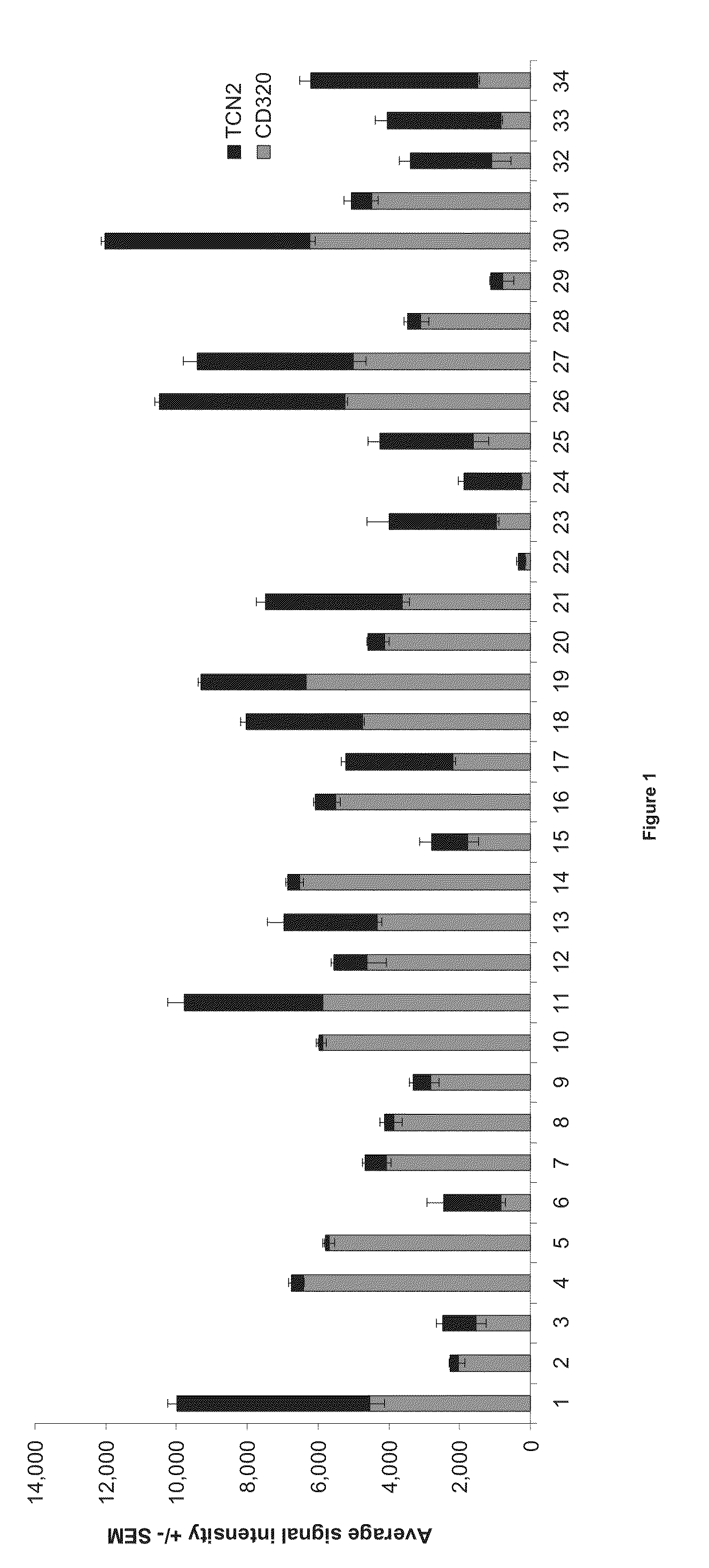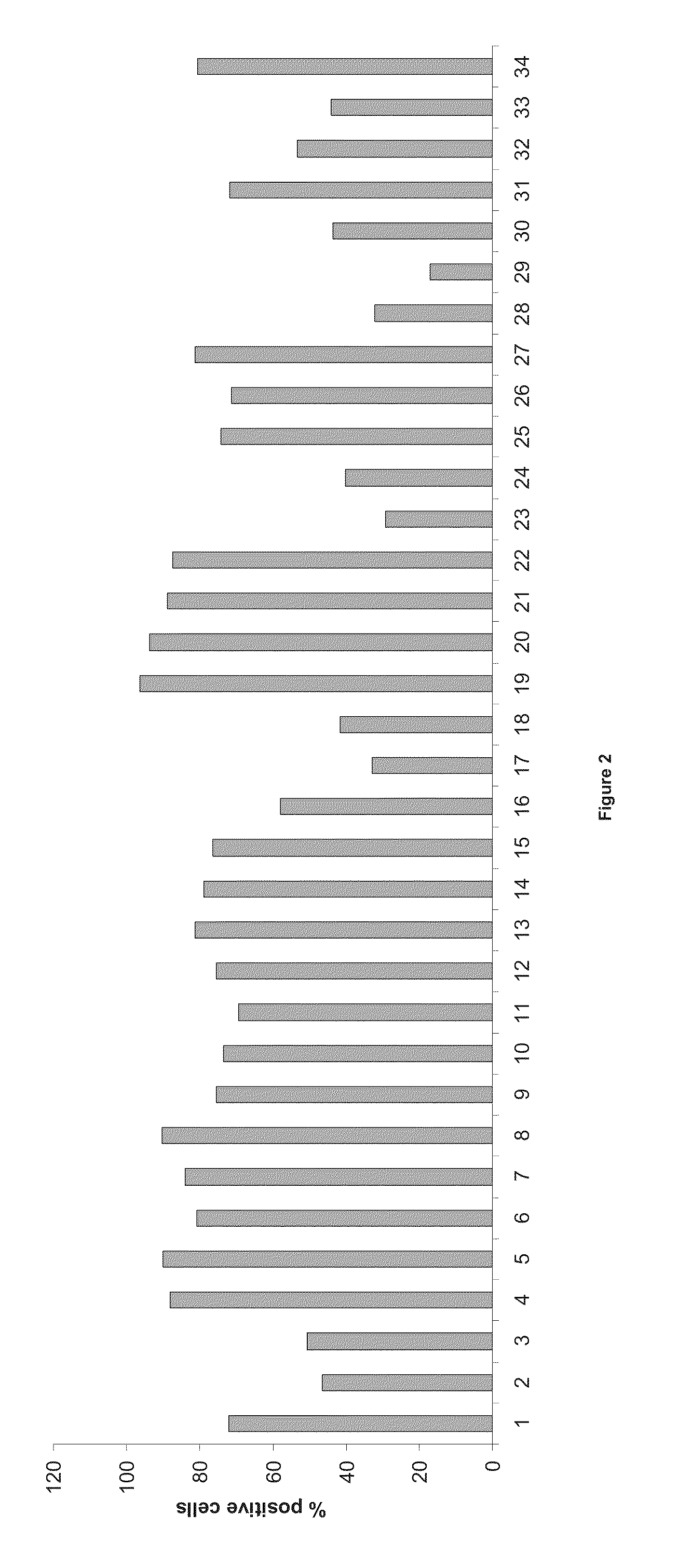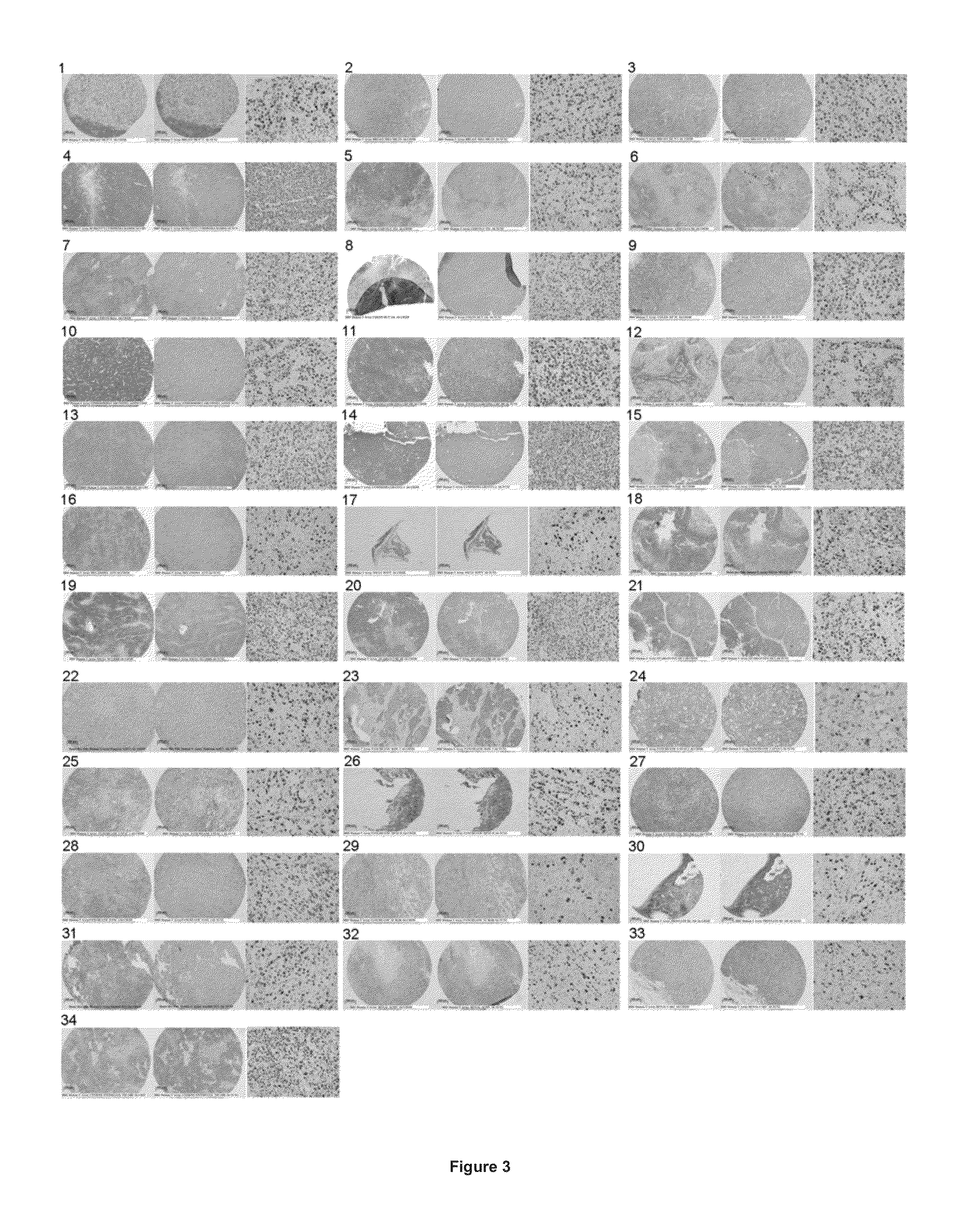Methods for the diagnosis, treatment and monitoring of cancer
- Summary
- Abstract
- Description
- Claims
- Application Information
AI Technical Summary
Benefits of technology
Problems solved by technology
Method used
Image
Examples
example 1
Immunohistochemical Quantification of TCII, TCIIR, and Ki-67 Expression in Human Tumor Xenografts
[0048]Commercial tissue microarray slides were purchased from the Tissue Acquisition and Cellular / Molecular Analysis Shared Service at the University of Arizona Cancer Center (Tucson, Ariz.). Expression of TCII, TCIIR, and Ki-67 were measured in thirty-four human tumor xenografts. Tumor cell lines evaluated included: (1) breast carcinoma MCF7 / S, (2) breast carcinoma MDA-MB-231, (3) breast carcinoma ZR-75-1, (4) Burkitt's lymphoma Ramos, (5) cervical C-33A, (6) cervical Ca Ski, (7) cervical HeLa, (8) colon HCT-116, (9) colon HT-29, (10) epidermoid carcinoma A431NS, (11) Ewing's sarcoma CHP-100, (12) glioblastoma multiforme SF-767, (13) leukemia MDS / SP1, (14) lymphoma Granta-4, (15) lymphoma Raji, (16) melanoma A375, (17) non small cell lung cancer (NSCLC) H1975, (18) NSCLC MV-522, (19) NSCLC NCI: H460, (20) ovarian 2780AD, (21) ovarian carcinoma NIH-OVCAR-3, (22) pancreatic AsPC-1, (23) p...
example 2
Immunohistochemical Quantification of TCII, TCIIR, and Ki-67 Expression in Naturally Occurring Canine Tumors and in Corresponding Adjacent Non-Malignant Tissues
[0056]Expression levels of TCII, TCIIR, and Ki-67 were measured in ten types of spontaneously occurring canine tumor tissues as well as in corresponding immediately adjacent normal, non-malignant tissues. Tissue samples were obtained from the stored paraffin blocks of VDx Veterinary Pathology and Research Services Diagnostic Laboratory (Davis, Calif.). Three cases each of ten different canine tumor types (n=30) were selected based on previously established histopathological diagnosis. The ten tumor types evaluated included: (1) transitional cell carcinoma-bladder; (2) appendicular osteosarcoma; (3) melanoma; (4) splenic hemangiosarcoma; (5) anal gland adenocarcinoma; (6) lymphoma; (7) prostatic carcinoma; (8) fibrosarcoma; (9) digital squamous cell carcinoma; and (10) thyroid carcinoma.
[0057]Formalin-fixed, paraffin-embedded ...
example 3
Immunohistochemical Quantification of TCII, TCIIR, and Ki-67 Expression in Naturally Occurring Feline Tumors and in Corresponding Adjacent Non-Malignant Tissues
[0066]The expression levels of TCII, TCIIR, and Ki-67 were measured in twelve types of spontaneously occurring feline tumor tissues as well as in corresponding immediately adjacent normal, non-malignant tissues. Tissue samples were obtained from the stored paraffin blocks of VDx Veterinary Pathology and Research Services Diagnostic Laboratory (Davis, Calif.). Three cases each of twelve different feline tumor types (n=36) were selected based on previously established histopathological diagnosis. The twelve tumor types included: (1) biliary carcinoma; (2) dermal carcinoma; (3) vaccine-associated fibrosarcoma; (4) intestinal adenocarcinoma; (5) intestinal lymphoma; (6) intestinal mast cell tumor, (7) mammary adenocarcinoma; (8) nodal lymphoma; (9) oral squamous cell carcinoma; (10) soft tissue sarcoma; (11) splenic mast cell tum...
PUM
| Property | Measurement | Unit |
|---|---|---|
| Level | aaaaa | aaaaa |
| Chemotherapeutic properties | aaaaa | aaaaa |
Abstract
Description
Claims
Application Information
 Login to View More
Login to View More - R&D
- Intellectual Property
- Life Sciences
- Materials
- Tech Scout
- Unparalleled Data Quality
- Higher Quality Content
- 60% Fewer Hallucinations
Browse by: Latest US Patents, China's latest patents, Technical Efficacy Thesaurus, Application Domain, Technology Topic, Popular Technical Reports.
© 2025 PatSnap. All rights reserved.Legal|Privacy policy|Modern Slavery Act Transparency Statement|Sitemap|About US| Contact US: help@patsnap.com



